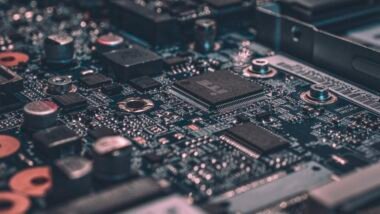In the world of wireless video monitors, there is a wide range of video analytics that can be supported. These advanced technologies not only enhance the security and surveillance capabilities of these monitors but also provide valuable insights and data. From facial recognition and object detection to motion tracking and license plate recognition, the possibilities are endless. This article will explore the different types of video analytics that can be utilized with wireless video monitors, shedding light on the innovative ways in which these devices can make our lives safer and more secure. Wireless video monitors are equipped with advanced video analytics capabilities that enhance their surveillance functionality. These video analytics technologies can help in various applications, from security monitoring to retail analytics. In this article, we will explore the different types of video analytics supported by wireless video monitors and delve into how they work, their applications, and their advantages.
Motion Detection
Motion detection is one of the fundamental video analytics features supported by wireless video monitors. It works by analyzing changes in the video feed to detect any movement in the scene. When motion is detected, the wireless video monitor can trigger an alert, start recording, or perform any other pre-programmed action.
This type of video analytics is particularly useful in security applications. You can set up motion detection to keep an eye on specific areas or objects, such as entrances or valuable assets. Whenever there is any unauthorized movement, you will receive notifications, allowing you to take immediate action.
The main advantage of motion detection is its ability to reduce false alarms. By adjusting the sensitivity settings, you can customize the monitor to ignore things like swaying trees or small animals, focusing only on relevant motion events.
Object Tracking
Object tracking is another important video analytics feature provided by wireless video monitors. It involves following a specific object or person as they move through the video frame. This can be achieved by using advanced algorithms and machine learning techniques to track the object’s unique features.
The applications of object tracking are diverse. In security scenarios, it can be used to track suspicious individuals or monitor the movement of specific objects such as vehicles or packages. In retail environments, it can be employed to track customer behavior and analyze shopping patterns.
One of the key advantages of object tracking is its ability to provide valuable insights into the movement and behavior of objects or individuals. By analyzing the tracked data, you can gain a deeper understanding of trends and patterns, which can contribute to better decision-making.
Facial Recognition
Facial recognition is a cutting-edge video analytics technology that enables wireless video monitors to detect and identify individuals based on their facial features. This technology utilizes advanced algorithms to analyze facial characteristics such as the shape of the face, eyes, nose, and mouth.
Facial recognition has numerous applications, ranging from security and access control to marketing and personalization. In security, it can help identify known criminals or unauthorized individuals. In marketing, it can be used to analyze customer demographics and preferences, enabling targeted advertising.
The main advantage of facial recognition is its accuracy and efficiency in identifying individuals. With its ability to match faces against a database of known individuals, it can significantly enhance security and provide valuable data-driven insights.

This image is property of pixabay.com.
License Plate Recognition
License plate recognition is a specialized video analytics technology that focuses on capturing and interpreting license plate information from vehicles. It involves using optical character recognition (OCR) algorithms to extract the characters on the license plate and convert them into text.
The applications of license plate recognition are extensive. In law enforcement, it can aid in tracking stolen vehicles or identifying vehicles involved in criminal activities. In parking management, it can automate access control and payment systems.
One of the main advantages of license plate recognition is its ability to automate processes that were traditionally time-consuming and manual. It enables quick and accurate identification of vehicles, allowing for efficient enforcement and management.
Behavioral Analysis
Behavioral analysis is a video analytics technique that aims to understand and analyze human behavior patterns. It involves monitoring and interpreting actions, gestures, and movements to extract meaningful insights.
The applications of behavioral analysis are vast. In retail, it can help analyze customer interactions with products, allowing for better merchandising and store layout decisions. In public spaces, it can aid in detecting suspicious or abnormal behavior, enhancing overall security measures.
The main advantage of behavioral analysis is its ability to provide actionable intelligence based on human behavior. By studying patterns and anomalies, it can help predict potential incidents and improve situational awareness.
Crowd Analysis
Crowd analysis is a specialized video analytics technology that focuses on the behavior and dynamics of large groups of people. It involves analyzing crowd density, flow, and movement patterns to understand and manage crowd behavior.
Crowd analysis has various applications, particularly in public safety and event management. It can help monitor crowd disturbances, estimate crowd sizes, and optimize crowd flow management in places like airports or stadiums.
One of the key advantages of crowd analysis is its role in maintaining public safety. By detecting overcrowding or identifying potential incidents, it enables timely intervention and ensures the smooth flow of people.
Virtual Perimeter Detection
Virtual perimeter detection is a video analytics technique that allows wireless video monitors to create virtual boundaries and trigger alerts when these boundaries are breached. It involves setting up virtual fences or zones that are monitored for any intrusions.
The applications of virtual perimeter detection are many, from securing sensitive areas to protecting valuable assets. It can be used in areas such as construction sites, warehouses, or private properties to prevent unauthorized access.
The main advantage of virtual perimeter detection is its proactive nature. It allows for early detection of potential threats and provides an immediate response, increasing overall security effectiveness.
People Counting
People counting is a video analytics feature that enables wireless video monitors to accurately measure and track the number of people passing through a specific area. It utilizes advanced algorithms to detect and count individuals based on their movement and appearance.
People counting has a wide range of applications. In retail, it can help optimize staffing levels, analyze foot traffic patterns, and measure conversion rates. In public transport, it can aid in determining passenger flows and optimizing resource allocation.
The main advantage of people counting is its ability to provide actionable data for business decision-making. By understanding customer traffic and behavior, businesses can improve operations, enhance customer experiences, and increase profitability.
Heat Mapping
Heat mapping is a video analytics technique that visualizes the distribution and concentration of people or objects within a specific area. It utilizes color-coded overlays to display areas of high activity or interest.
Heat mapping finds applications in various fields, from retail and marketing to urban planning and facility management. In retail, it can help identify hot spots and optimize product placement. In urban planning, it can aid in analyzing pedestrian movements and improving infrastructure design.
The advantage of heat mapping lies in its ability to provide a visual representation of data. It allows for quick and intuitive interpretation of information, enabling efficient decision-making and resource allocation.
Tamper Detection
Tamper detection is a video analytics feature that monitors the integrity of the wireless video monitor itself. It can detect and raise an alert if there is any attempt to tamper with the camera, including physical obstruction, defocusing, or even covering the lens.
The applications of tamper detection are primarily in security and surveillance scenarios. It ensures the reliability and effectiveness of the monitoring system by alerting you to any potential sabotage attempts.
The main advantage of tamper detection is its ability to maintain the integrity of the surveillance system. By promptly notifying you of any tampering, it allows for timely intervention and ensures continuous surveillance coverage.
In conclusion, wireless video monitors support various types of video analytics that greatly enhance their surveillance capabilities. From motion detection to facial recognition, these advanced technologies enable more efficient and effective security monitoring, as well as provide valuable data-driven insights for other applications. By harnessing the power of these video analytics features, you can improve safety, optimize operations, and make more informed decisions.

Meet Penny Sterling, the editor behind the captivating content of our blog, “Wireless Video Monitor.” With a background in electrical engineering and a deep passion for technology, Penny has become a leading authority in the world of wireless video monitors. Her ability to distill complex concepts into accessible articles has made her a trusted guide for both tech enthusiasts and newcomers to the field. Penny’s unwavering commitment to research and staying up-to-date ensures that “Wireless Video Monitor” remains an authoritative source for reliable information. Get ready to embark on a journey of wireless video monitor exploration with Penny Sterling as your knowledgeable and dedicated mentor.


